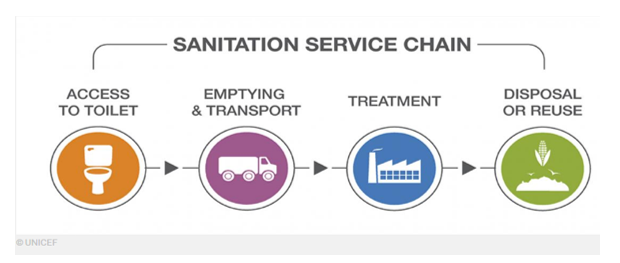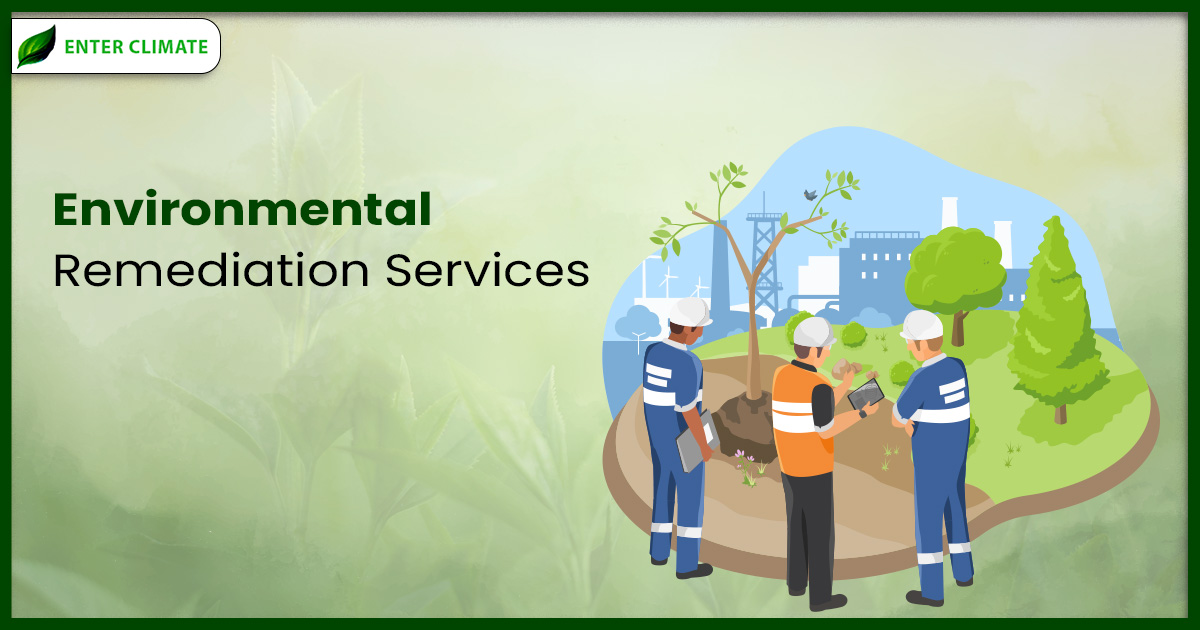Sustainable Sanitation Solutions
 01 Nov, 2023
01 Nov, 2023 
Safe and cost-effective sanitation is a significant environmental challenge for the society. Due to numerous factors at play, sanitation is no longer a localised issue and has rather become a pervasive social and environmental concern. Inadequately managed sanitation problems can pose adverse environmental and health risks. As per the data available, around 2.6 billion people across the globe do not have access to any kind of sanitation, and 2.2 million deaths occur every year due to sanitation-related ailments and diseases and poor hygienic conditions. Being the world’s second most populated country, implementing safe and sustainable sanitation solutions for millions of people becomes an even bigger challenge in India. While our nation has improved its condition on that front, it has still not been able to achieve its Millennium Development Goal (MDG) qua sanitation target, which is to extend access to sanitation to 100 per cent of the urban population by 2025 and around 55 per cent of its people still do not have access to proper sanitation. In this article, we will highlight the current state of sanitation in the country and discuss the need for sustainable sanitation solutions, along with the solutions to achieve the same.
What is Sustainable Sanitation?
Let us first try to understand what sustainable sanitation means after all. Sanitation System ensures to protect and promote human health by enabling access to a cleaner environment and proper hygienic conditions. The concern should not just be to make the sanitation system economically sustainable but also socially acceptable, institutionally appropriate and environmentally sustainable. Therefore, sustainable sanitation is a kind of approach to sanitation that aims to minimise the adverse environmental impact, preserve natural resources and promote hygiene and public health. Some of the sustainable sanitation solutions that have been adopted around the world are composting toilets that help reduce the waste generated by conventional toilets by using natural processes to convert the human waste into compost or using wetlands for filtering and treating wastewater, which further lowers our dependency on the energy-intensive treatment process.

Source: National Geographic.org
Need for Sustainable Sanitation Solutions
The joint monitoring programme of the World Health Organisation (WHO) and the United Nations International Children’s Emergency Fund (UNICEF), along with the consideration of the UNDP Report, has revealed that the improper implementation of sanitation programmes and the rare political attention towards these issues are the major factors that sanitation still remains an issue in 2023, across the world. Even in our country, the call for Swachh Bharat was made by our honourable Prime Minister in 2014. It was one of the biggest missions undertaken to ensure better hygiene and cleanliness for our societies, which envisages processing 100 per cent of the solid waste generated in cities or towns and includes sanitation waste as well. This flagship programme triggered a huge momentum in the sanitation industry in India and brought the issues concerning sustainable sanitation solutions to the forefront. Thus, there is a pressing need to bring in sustainable sanitation solutions because of various reasons which cause conventional sanitation practices to have severe adverse effects, some of which are:
Ineffective Sewage System
There are areas where there is a dearth of proper and effective sewage systems; however, even in the areas which have sewage systems in place, they usually suffer from improper and poor maintenance, hence leading to the problem of overflowing most of the time. Metropolitan cities like Delhi are failing to manage the wastewater that is produced daily by the population of around 30 million, as these systems were originally built to serve 3 million people. These sewage systems are woefully inadequate because, as of 2023, only 30 per cent of the wastewater is being treated.
Economic Losses
Usually, when one thinks about the adverse effects of improper sanitation, one’s imagination limits itself to the environmental and health effects. However, these are not the only two areas of concern. A report by the Economic Impacts of Inadequate Sanitation in India revealed that inadequate and improper sanitation causes tremendous economic losses to India, which are around USD 53.8 billion. These economic losses include the cost associated with the diseases, loss of life, education, time, resources, etc. In fact, despite being one of the greatest revenue generators, sanitation still remains the most neglected aspect.
Adverse Health Effects
Another reason for highlighting the need for sustainable sanitation solutions is the impact of improper and poor sanitation on human health, as this leads to the transmission of oral-faecal diseases, infections, and diseases like diarrhoea, which is responsible for causing around half a million deaths amongst children below the age of 5 years. In fact, unsafe and improper sanitation is one of the world’s biggest health problems, and apart from the aforementioned diseases, it also exacerbates malnutrition and childhood stunting. Therefore, these unhygienic conditions combined with a huge population create a breeding ground for epidemics.
Right to Dignity
Above and beyond everything, access to proper sanitation and water is regarded as a human right, and it comes under the ambit of the right to dignity of a human being. Lack of proper sanitation causes these domino effects, which lead to the violation of the basic human rights one has. It has also been so affirmed in numerous international and political treaties and commitments. In fact, even though the Constitution of India does not explicitly provide for the right to sanitation as a fundamental right, the higher Judiciary in India has interpreted the fundamental right to life so as to include the right to sanitation within its ambit. Therefore, investing in sustainable sanitation solutions will not only allow the enjoyment of basic human rights and protect their dignity but will help improve the overall living standards of people and lead to improved and sustainable development.
Current State of Sanitation in India
Under the flagship programme of the Swachh Bharat Mission in 2014, when the issues concerning sustainable sanitation solutions were brought to the forefront, the central, state and local machinery started focussing on the implementation of the sanitation policies and programmes. As per the data available, it has been pointed out that around 57 per cent of the people in the world who practice open defecation are actually found in India. Despite the implementation of many policies and programmes, the national sanitation coverage was found to be 46.9 per cent as per the survey of 2011. The infrastructure is so defective that the 7,94,390 dry latrines that existed in India as per the census of 2011 were cleaned by mostly sewage workers, mostly Dalit women, mostly without any protective gear and consequently suffering from occupational hazards, which led to deaths in worst case scenarios.
Therefore, despite its pursuit to achieve the MDG goals, the gap between the rhetoric and the real situation is quite wide. Despite some progress, the inequality in access to improved sanitation is real and is quite lower than in many other countries with similar or lower per capita income. Around 600 million people in India still do not have access to any kind of sanitation or basic toilets, and the figures are even more daunting in rural areas, as many studies highlight that 74 per cent of the rural population still defecates out in the open, either due to non-availability of any sanitation facility or even if facilities exist, they are inadequate. On top of that, 7,00,000 Indians still make a living by manually scavenging the human excreta. The government of India understands and recognises the problem and has been taking measures to rectify the situation by investing in sustainable sanitation solutions.
Government Initiatives for Sustainable Sanitation Solutions

With an objective to essentially incentivise public facilities, to promote hygiene, cleanliness, and infection control and completely eradicate open defecation in all areas, promote 100 per cent scientific management of solid waste and bring about a positive change in the public behaviour towards these aspects, the government of India has been constantly taking efforts by introducing various schemes and initiatives by promoting sustainable sanitation solutions. Some of these are:
Swachh Bharat Mission 2.0
The government of India announced the Swachh Bharat Mission 2.0, which will be implemented over a period of 5 years, i.e., from 2021 to 2026. In pursuance of the same, the government has laid down an outlay of INR 1.41 Lakh Crores, which will be utilised in the effective implementation of the mission. As per the reports, the Swachh Bharat Gramin expenditure has been increased from INR 2,841 crores to INR 16,888 crores. So far, mission 2.0 has been quite successful in changing the sanitation landscape and has revolutionised the space by endeavouring to provide 100 per cent sanitation facilities in urban areas of the country. Community and public toilets have been built to ensure dignified, sustainable sanitation solutions for people. The mission has also tried to introduce digital innovation by bringing in SBM Toilets on Google Maps; the Swachhta App has been brought to provide a digital grievance redressal platform to the public, etc.
Swachh Survekshan 2020
Swachh Survekshan 2020 was launched by the Ministry of Housing and Urban Affairs to assess the cleanliness of cities and towns in India under the aegis of the Swachh Bharat Mission (SBM). Therefore, the objective was again to monitor the cleanliness and hygiene of the cities every quarter, and the cities will be ranked accordingly. Therefore, in a way, this has become an accelerator for the SBM Mission as it has been taking the current targets further by ensuring that cities become defecation-free and ensuring safe disposal of waste.
National Urban Sanitation Policy
This policy was also introduced with the goal of transforming urban India into clean, healthy and sanitised towns. The policy aimed to generate awareness about safe and sustainable sanitation solutions and endeavoured to link public health institutions with this cause. The idea was to be able to bring behavioural changes and encourage people to adopt sustainable sanitation solutions and practices. Further, the policy targeted urban areas and aimed to make them open defecation-free by promoting access to safe and sustainable sanitation facilities in households and by constructing and promoting community-managed toilets wherever possible and, more importantly, maintaining these public facilities.
Government Subsidy
The government of India has time and again reminded its states and the people of the importance of safe and sustainable sanitation solutions and has stressed the need for every state to formulate and build its own sanitation strategy. The Ministry of Housing and Poverty Alleviation also administered a scheme to sponsor Integrated Low-Cost Sanitation (ILCS). The Central subsidy was provided under this scheme to the extent of 75 per cent and state subsidy to the extent of 15 per cent, along with the beneficiary contribution to the extent of 10 per cent. The aim was to use 75 per cent of the central allocation for converting dry latrines into low-cost or economical pour-flush latrines, and the remaining 25 per cent was to be used for constructing new sanitation infrastructure for economically weaker sections.
Conclusion
While much has already been achieved in improving and bringing sustainable sanitation solutions in the country and India has achieved the Open Defecation Free status, the need to maintain is equally, if not more, important. The need to put a robust mechanism in place to monitor the condition of sanitation at the local level cannot be ignored. Our towns and cities are not yet litter-free or garbage-free, and hence, there is still a major requirement to keep our attention on the circular economy by converting our waste into resources. In order to keep upgrading the sustainable sanitation solutions, we must promote behavioural changes through a dedicated workforce while at the same time taking proactive measures to achieve our MDG targets.
FAQs
Sustainable sanitation is a kind of approach to sanitation that aims to minimise the adverse environmental impact, preserve natural resources and promote hygiene and public health.
Some of the sustainable sanitation solutions that have been adopted around the world are composting toilets that help reduce the waste generated by conventional toilets by using natural processes to convert the human waste into compost or using wetlands for filtering and treating wastewater, which further lowers our dependency on the energy-intensive treatment process
In order to make sanitation sustainable, it not only has to be economically viable but also socially acceptable, institutionally appropriate and environmentally sustainable.
Sustainable Development Goal 6 talks about ensuring access to safe water and sanitation and hygiene for everyone, which are critical for survival.
The impact of improper and poor sanitation causes adverse environmental and health effects, along with which can also lead to economic losses; thus, there is a need to build sustainable sanitation systems to mitigate these concerns.
Poor sanitation is a problem as the same impacts human health as improper sanitation leads to the transmission of oral-faecal diseases, infections, and diseases like diarrhoea, which is responsible for causing around half a million deaths amongst children below the age of 5 years. In fact, unsafe and improper sanitation is one of the world’s biggest health problems, and apart from the aforementioned diseases, it also exacerbates malnutrition and childhood stunting; thus, there is a need for sustainable sanitation solutions.
The objective of sustainable sanitation is to promote and protect human health by providing a cleaner and hygienic environment in order to break the cycle of disease.
Some of the various types of sanitation are basic sanitation, dry sanitation, community-led sanitation, ecological sanitation, onsite sanitation, etc.
Proper and effective sanitation is a key aspect for achieving sustainable development goals, as the same concerns itself with issues of good health and gender equality. It is an important aspect of the right to dignity and constitutes a basic human right. Sustainable sanitation not only allows mitigating environmental and health concerns but is also necessary to reduce economic costs.
In order to improve sanitation in India, the government needs to focus on educating the masses by starting awareness campaigns to promote the importance of safe and proper sanitation and apprise them of the harmful effects of poor sanitation. Apart from endeavouring to change behavioural practices, there is a need to invest in effective sanitation infrastructure.












